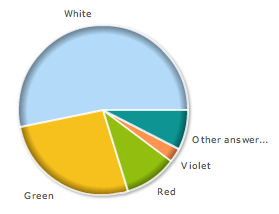This is a reflection on the online poll related to my blogpost on Liturgical Colour (November 26) for the last Sunday of the Church’s Year.
The liturgical colour used for that Sunday, according to the poll was:
White: 53%
Green: 27%
Red: 8%
Violet: 2%
Other: 10% (a lot of “gold”, “gold and white”; a “green but paid attention to Christ the King”; a “rainbow of hope for Christ the king”)
How do we find or create unity and enjoy, respect, celebrate diversity? So many people scorn liturgy as they misunderstand it through caricatures of rubrical fundamentalism. Authentic, efficacious liturgy is not the experience that everywhere is identical – as if the celebration in small wooden church on a rural paddock with eight, related local farmers is to be a clone of the service celebrated at the same time in a grand, ancient cathedral.
But do we then have “anything goes”? Since 1984 that has been the trajectory of the New Zealand Anglican Church. A decade ago here the framework Form for Ordering the Eucharist, intended for weekday and special occasions, was authorised for Sunday use. All that was left uniting communities was a few paragraphs required to be included in a locally-written eucharistic prayer (and presumably the Sunday readings – with its many options here?) Everything from responses, collect, confession (if used), etc. could be created locally or sourced from anywhere. That flexibility, apparently, was not enough! So General Synod more recently authorised the Alternative Form for Ordering the Eucharist as a formulary of our church – now all that is required is that the Eucharistic Prayer be authorised somewhere in the Anglican Communion – including, of course, the frameworks so authorised (eg. here and TEC).
Parallel to this two-decade trajectory of liberalising liturgical requirements has been a steep decline in the liturgical study, training, and formation of our clergy and worship leaders, and concomitantly, of course, our Anglican communities.
It is not surprising to me, then, that a church, once held together by our shared discipline of worship, even though it is small (about 30,000 in church on Sunday – is that about a percentage the size of say TEC? – and so it is held together a lot by people knowing each other…), with common worship no longer our binding factor – some are clamouring for other forms of holding our unity.
To conclude this post: Our lectionary had Green for Christ the King until 2002, when it became Red or Green; 2003-2004: Green or Red; 2005-2007: White (no other option); 2008-2009: Green (with Red in brackets, white not an option). And all this without the slightest explanation or communication with clergy or worship leaders. And bishops and leaders in our church might wonder why people just do whatever they like!
Further reading: the Anglican Church of Or




